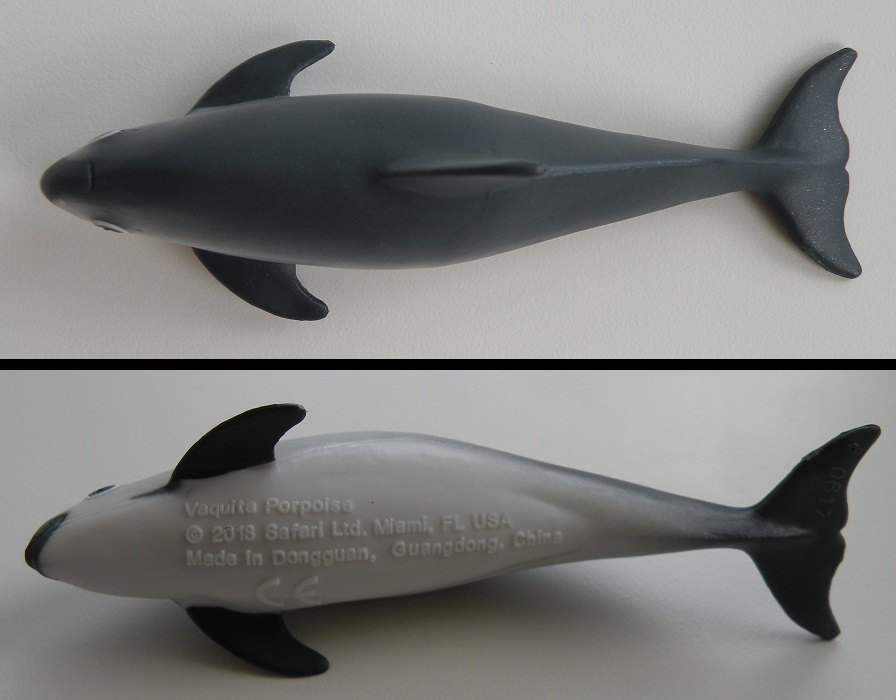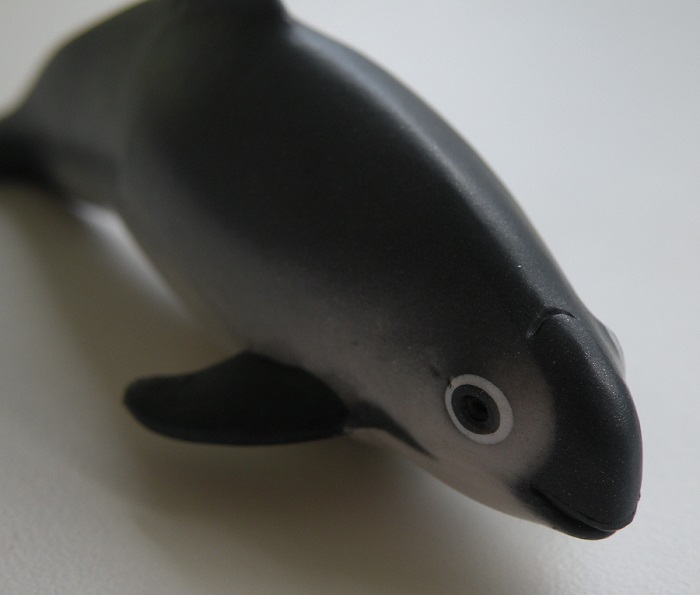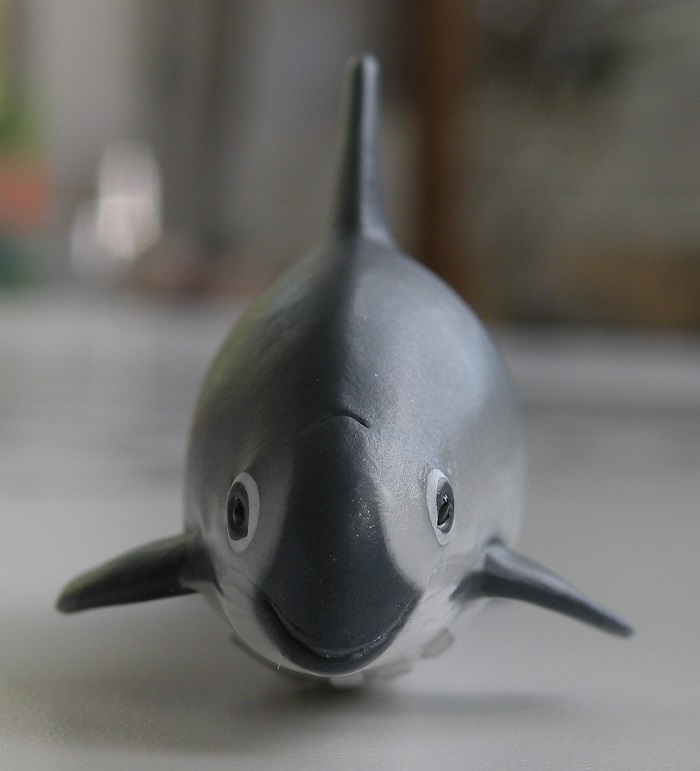The vaquita (Phocoena sinus) has the distinction of being the smallest and most endangered cetacean in the world. In the last 22 years the population of vaquita has dropped from 567 to roughly 10 individuals. The vaquita, like so many marine species, is not targeted specifically but ends up as bycatch in gill nets set for other species, in this case the similarly sized totoaba fish (Totoaba macdonaldi) which is itself also critically endangered. The vaquita only occurs in the northernmost portion of the Gulf of California in the Sea of Cortez and despite admirable attempts to thwart illegal gill netting and capturing the remaining porpoises for captive breeding it seems as though all is lost for the “little cow” (the English translation for vaquita). Illegal gill netting continues and attempts at keeping the vaquita captive have failed.

Safari Ltd. seems to be aware that extinction is imminent for the vaquita and as such they released a figure of the species for their 2018 line. The figure is very small, measuring 3.75” (9.5cm) but this actually puts the toy at 1/14 in scale because the actual vaquita is also small. Males average 4.4’ (1.3 meters) while females tend to be a bit larger. Vaquita belong to the genus Phocoena along with three other species, their closest relative is the Bermeister’s porpose (P. spinipinnis) of South America.

I’m not aware of any other mass produced vaquita figures (EDIT: Yowies made one for their All American series) but the Safari is more than adequate. The vaquita has the typical porpoise body plan, stoutly built with a rounded head but it also has a proportionally large dorsal fin unlike other Phocoena. Rings around the eyes and a dark patch over the snout and lips further distinguish the vaquita from other similar species. Safari has faithfully reproduced all of these features but another dark patch that extends from the darkly colored pectorals to the mouth is absent here. They start at the fins towards the mouth but fail to make it all the way there, an easy fix if one felt so inclined. The body of the figure is gray dorsally and fades to white on the underside with a lifelike blending of the colors.

The vaquita porpoise is what ecologists call a “dead clade walking (swimming)”. Even if the remaining population were successfully saved it seems unlikely that the species would recover, the species is functionally extinct. Fast forward a few more years it would probably be more appropriate to post this review on the Dinosaur Toy Blog instead of here. I first became interested in this species in the early 2000’s when the population was at 150-300 individuals and have lamented watching it plummet over the last couple decades. Although other species have recovered from similarly low numbers it seems unlikely given the location and rapid decline in population that the vaquita will be here much longer. The Safari vaquita is a beautiful and important little figure that serves to remind us of what’s still out there to save and what can be lost if we don’t.

Disclaimer: links to Ebay and Amazon on the AnimalToyBlog are affiliate links, so we make a small commission if you use them. Thanks for supporting us!




With regards to mass-produced vaquita figures, Yowie Group (Yowie USA) did release on in recent years. I don’t have my references handy to know which series it was part of (maybe the All Americas series).
confirmed, the Yowie vaquita was part of the All Americas Series.
Thanks for the info. I edited the review to include that.
This may be the most depressing Blog post ive read in either of the two blogs that we post in.
I learnd alot from this post, and i cant say im happy, but maybe it is true that this may one day be more fitting on the Dinosaur toy Forum, rather then here
Excuse me. I meant to Say blog not forum
Well I’m glad that the post was informative for you but yes, it was certainly the most depressing post I’ve ever written.